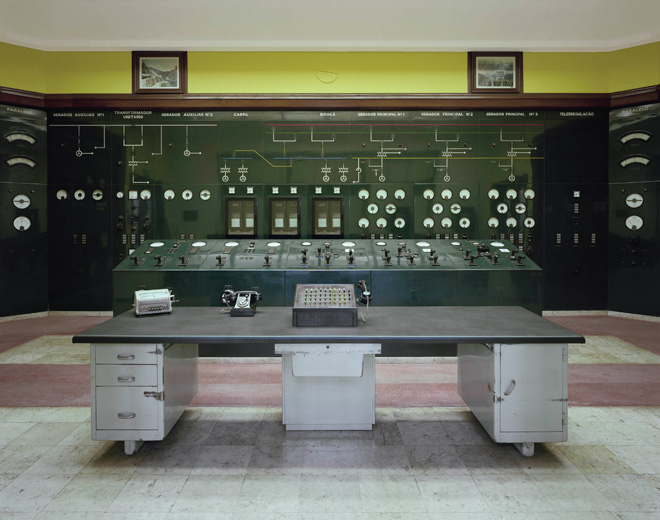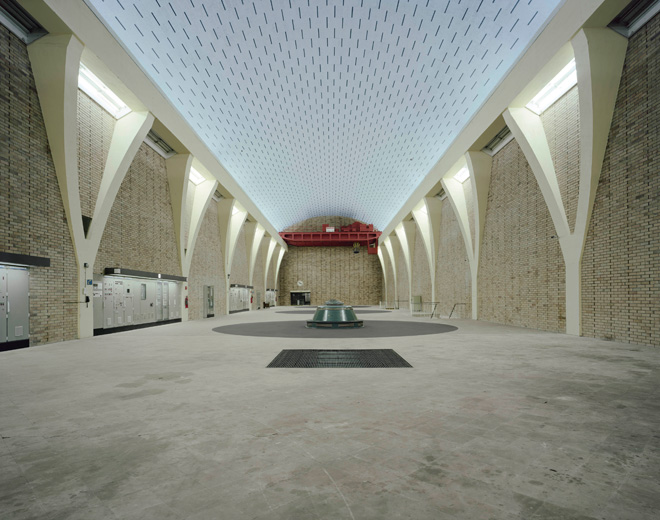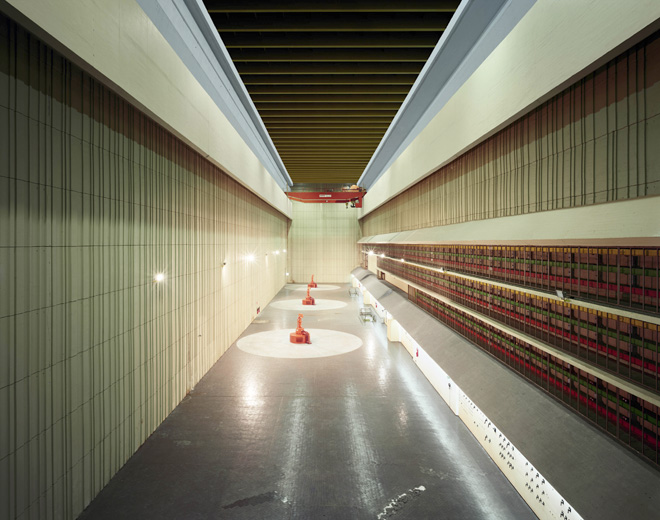In 2010, Edgar Martins was granted access to around 20 power stations facilities within Portugal so that he may photograph the interior and show the world. Many of those facilities were actually built between 1950 and 1970, "a time of hopeful prospects for rapid economic growth and social change" according to dissfussionfestival.org. They go on to speak of his work as a way of documenting a period in time of which the facilities' design was intentionally progressive as a way to testify to the scope and ambition of the original vision they were built to serve.
(http://www.diffusionfestival.org/programme-item/the-time-machine/)
This work brings a sense of nostalgia to the industrial designs well known from 1970s science-fiction films and TV shows. The work, almost dated in itself, brings a sense of attempted harmony, but with a hint of neglect as the photo presents itself in isolation from any human operation.
As you can see above, the control room is readily available for use and operation, yet the contact and human interaction is almost nonexistent. The surfaces are clear, pristine, almost untouched. The centralised subject shows a cohesive look at the overall symmetry within the room, yet the cleanliness almost lends itself to being a novelty than a tool. The flooring shows it withheld the weight of many feet, and the steps have almost taken their toll whilst the tools show a binary opposite. This eerily opposing imagery is both aesthetically pleasing, and saddening.
It's saddening to see that such a grand facility would be abandoned, the opportunities it has left behind, laying in the dust of the previous human presence. The ever-evolving has chosen against keeping this wonderful place from creating electricity for us. I think it's worth noting that all of these facilities are hydro-electricity power plants. Now, as a society, I believe we've not properly looked at the most opportunistic options for energy creation, and we aren't much further in finding a sustainable reliable source that can provide energy for us at a substantial rate. Hydro-electricity was a safe option for humans as the proximity of the water itself was no issue whatsoever, unlike the other nuclear options that many are exploring today. It isn't a criticism, it's more a reflection of my own opinion that as a world we haven't entirely found a solution that presents itself as safe that has great potential.
The real beauty of Edgar Martins' "The Time Machine" is the symmetry, perfect dimensions, and overall order within his set of images that ominously sets it apart from the contrasting messiness that is human nature, and yet we created it. The centralisation of much of the imagery is visually pleasing, and is a great send-off for a place that served well, but didn't use up its time. The retrograde colouring is a tribute to a design era that we should be proud of. You can find the whole set of 64 photographs here on his website. (http://www.edgarmartins.com/work/the-time-machine-an-incomplete-semi-objective-survey-of-hydropower-stations-2011/)



No comments:
Post a Comment